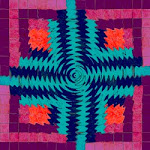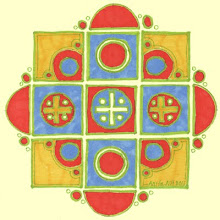Michael Frierson's
Clay Animation: American Highlights 1908 to the Present is an interesting read. Clay animation was made possible by the invention of plasticine around 1900. A precursor is the flip book of sequential drawings brought to life through the
phi phenomenon: the optical impression of motion created when objectively stationary images are presented rapidly one after another. One of the earliest known women animators, Helena Smith Dayton (b.1879) produced "motion picture comedies in clay" and was written up in
Scientific American (16 Dec. 1916). But by the 1920's, the cel system was the dominant mode of animation production. The amateur filmmaker, Leonard Tregillus (a chemist for Eastman Kodak) produced two notable clay animated films: "No Credit" and "
Proem." Clay animation finally began a resurgence in the broadcast medium after television's first period of growth in 1948.
In the search for new children's programming, clay animation reestablishes an audience with Art Clokey's Gumby which first aired on The Howdy Doody Show on 16 June 1956. Children's advertising spawned name-brand recognition for toys beginning with Mattel's "Burp Gun" released for Christmas 1955. Clokey credits avatar Sathya Sai Baba with Gumby's later comeback in the 1980's. "Some models had the Sanskrit word for love emblazoned on the chest" [p122].
Clokey was a protege of Yugoslavian artist
Slavko Vorkapich, best known for the experimental film
The Life and Death of 9413, a Hollywood Extra (1928). Vorkapich applied graphic art principles to filmmaking. "Like lines, colors and sounds, different motions have different emotional values. . . there are many such fundamental expressive motions and their possibilities of combination are unlimited." In filmmaking, Vorkapich was a montage expert and contributed sequences to many popular films including 1937's
The Good Earth and
The Last Gangster. A montage can be defined as a panoramic effect in which the events covering a period of time are condensed to a succession of rapidly paced interlocking flashes. Vorkapich refers to it as "film ideagraphy."
In Clokey's opinion, Vorkapich "got down to basics. . . motion and the illusion of three dimensional objects created by use of shape, shadows, color and motion." The influence of Vorkapich is evident in the abstract animation of Clokey's early work titled
Gumbasia (1955), interesting for its "visual shorthand of fundamental shapes." Clokey believed that a character's external design should directly objectify its inner state. His work is notable for his use of screen vectors: the angle and direction that a character moves through filmic space. Remember how Gumby was always skating across the screen diagonally on one foot?
Much is also written about the "claymation" artist behind the 1974 Academy Award winner
Closed Mondays, Will Vinton. The book closes with a chapter on "new visionaries" of the 1990's (
Bruce Bickford and
David Daniels) and includes a bibliography and selected filmographies.
Burp Gun DigressionA bit of trivia about the
Burp Gun from
Images of the Child by Harry Edwin Eiss: "The Mattel Burp Gun became the first televised toy to become a sensational hit, selling more than a million, each priced at $4.00, by Christmas. . . The company even received a personal letter from then President Dwight D. Eisenhower, who requested a Burp Gun for his grandson, David." Here's a
1958 model now priced at $350.00 at
Mom & Pop's Vintage Toys. I never had a Burp Gun but I did have this
Flintlock cap pistol!



















